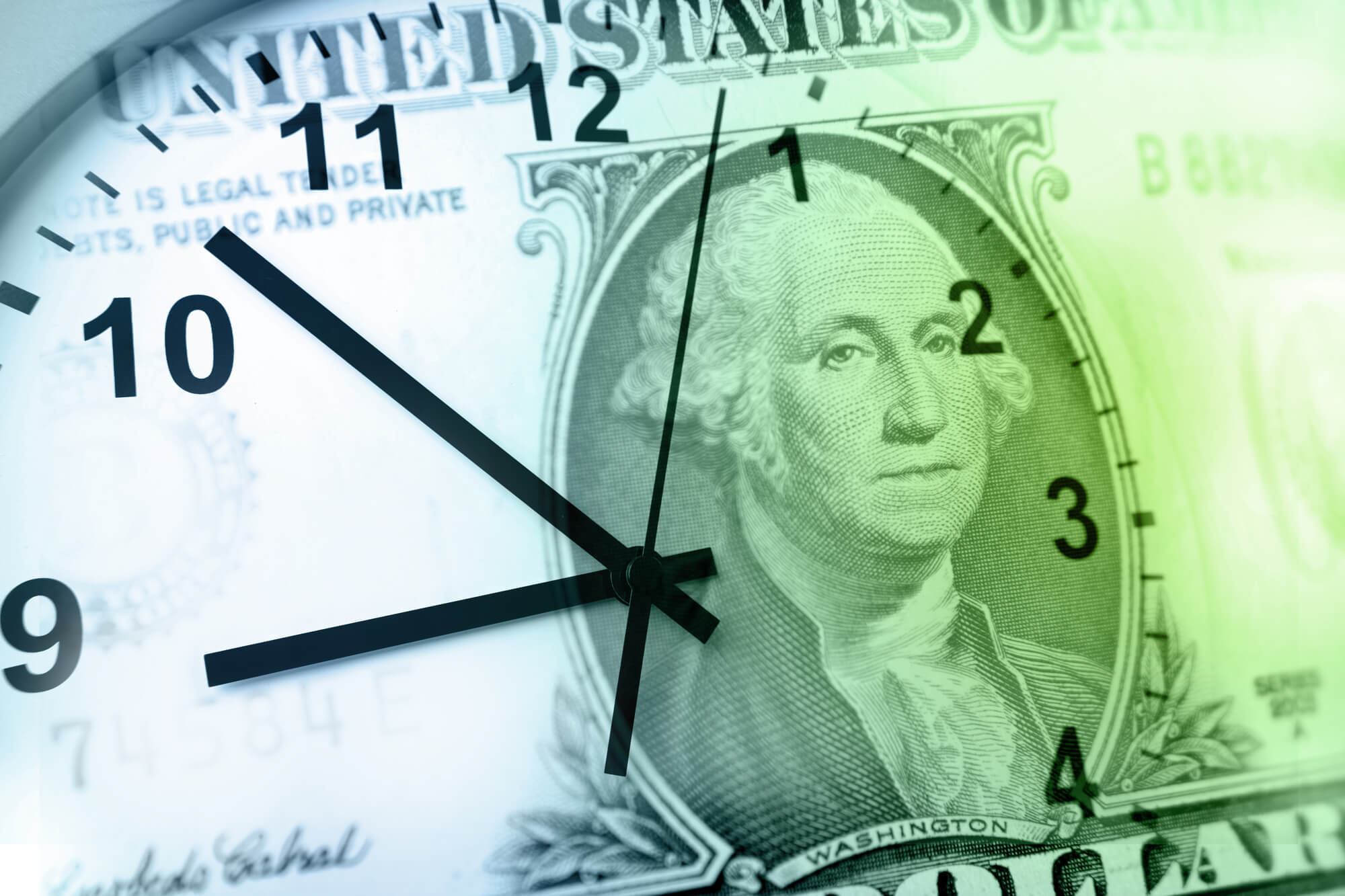As it so happens, the more money we make, the more we typically spend. That’s known as lifestyle inflation. But how much should we be spending?
You should spend no more than 1% of your net worth on luxuries (or wants) after having reached the expected net worth for your age and income. If you are an under-accumulator of wealth you should not spend on luxuries, and begin building wealth by saving and investing instead.
If you’re wondering how to calculate your expected net worth or what to do if you’re under-accumulating wealth, sit tight. We’ll explain everything below – so let’s climb.
What is 1% Rule For Luxury?
For high-income earners, it can be tempting to spend lavishly – since there’s plenty of money to spend. This rise in spending can come on rather suddenly, and often follows a period without much discretionary spending. Take, for example, a law or medical school student who spends years seeking advanced degrees without beginning their income earning years. They delay entering the workforce knowing that their payout will come in the form of a much higher income down the road.
However, upon entering the workforce and receiving that high-paying income, it’s more money than they may know what to do with. Money that wasn’t available to spend before now fills their wallets. They walk in circles of rich professionals who wear bespoke suits and drive nice cars – and it can be tempting to spend in ways that match the spending of their peers. This is where the 1% rule of luxury comes into play.
The 1% rule of luxury spending states that you shouldn’t spend more than 1% of your net worth on luxury items. It acts as a way to cap your spending so that you aren’t spending more money than you should. Not only that, but it helps incentivize you to increase your earning potential. If you want to spend more, you have to make and save more so that your spending will equate to 1% of your net worth.
For example, let’s say that you’re well on your way to financial independence. You have a total net worth of $750,000, and have a financial independence number of $1,500,000. Applying the 1% rule, you would budget $7,500 ($750,000 x 0.01 (or 1%) = $7,500) for luxury spending, allowing you to enjoy some of the fruits of your labor.
After your net worth increases to $1,250,000, your luxury spending would also increase to $12,500 per the 1% rule. Hitting your target of $1,500,000 would yield $15,000 for luxury spending. The premise simply being that as you continue making money well into your high-income earning years and as your net worth continues to grow, you will have more for ‘luxury’ spending.
This rule is best applied for those who aren’t seeking a lean-FIRE early retirement, and are interested in having the flexibility that comes from a fat-FIRE lifestyle.
| Total Income | Age | Expected Net Worth | 1% Luxury Rule |
| $50,000 | 25 | $125,000 | $1,250 |
| $50,000 | 27 | $135,000 | $1,350 |
| $75,000 | 30 | $225,000 | $2,250 |
| $75,000 | 32 | $240,000 | $2,400 |
| $75,000 | 35 | $262,500 | $2,625 |
| $90,000 | 37 | $333,000 | $3,330 |
| $90,000 | 40 | $360,000 | $3,600 |
| $90,000 | 42 | $378,000 | $3,780 |
| $110,000 | 45 | $495,000 | $4,950 |
| $110,000 | 47 | $517,000 | $5,170 |
| $110,000 | 50 | $550,000 | $5,500 |
| $125,000 | 52 | $650,000 | $6,500 |
| $125,000 | 55 | $687,500 | $6,875 |
| $125,000 | 57 | $712,500 | $7,125 |
| $150,000 | 60 | $900,000 | $9,000 |
| $150,000 | 62 | $930,000 | $9,300 |
| $150,000 | 65 | $975,000 | $9,750 |
| $175,000 | 67 | $1,172,500 | $11,725 |
| $175,000 | 70 | $1,225,000 | $12,250 |
When is the 1% Luxury Rule a Bad Idea?
Can the 1% rule be applied in every circumstance? Not quite.
Simply put, you shouldn’t be spending more than you’re saving while on your journey to financial independence. As a general rule, If you aren’t saving and investing, you shouldn’t be spending any percent on luxuries or wants until your finances are in proper order. This is why the 1% rule should be applied only after having reached (or exceeded) your expected net worth for your age and income.
For example, let’s say Dave is 40 years old, makes $125,000/year, and has no other income producing assets. He has a net worth of $245,000. Should he be spending 1% ($2,450/year) of his net worth on luxuries?
The answer is no.
Now, Dave’s friend Rachel is 29 years old, makes $65,000/year, and has investments that return an additional $6,000 for her. Her net worth is $215,000. Should she be able to spend 1% ($2,150/year) of her net worth on luxuries?
Yes. Yes she can.
Why is this the case? Even though Rachel has a lower net worth than Dave?
The answer is rather simple, actually. Rachel’s net worth exceeds her expected net worth for her age and income, while Dave’s does not. Dave is under accumulating wealth, which means he should focus more on saving and investing instead of spending on luxuries. Rachel on the other hand, has developed strong financial habits that are helping her to accumulate wealth. Her current trajectory can lead her to financial independence if she continues down this path.
| Total Income | Age | Net Worth | Expected Net Worth | Wealth Status | 1% Luxury Rule |
| $125,000 | 40 | $245,000 | $500,000 | Under Accumulating Wealth | No |
| $71,000 | 29 | $210,000 | $205,900 | Accumulating Wealth | Yes |
Why Shouldn’t I Spend On Luxuries Until Reaching My Expected Net Worth?
The main reason why you shouldn’t apply the 1% luxury rule if you have yet to reach your expected net worth is because under-accumulators of wealth are more likely to live above their means. They typically under-emphasize wealth building and put it off for more present pleasures. They enjoy spending now, and think that they will save more in the future. Unfortunately, their spending habits go up as they earn higher incomes, and their wealth never does. This pattern of over spending will prevent you from achieving financial independence.
Those who are classified as under-accumulators of wealth are those who have one-half or less of their expected net worth for his or her given income and age. From our example above, Dave should have a $500,000 net worth. But his net worth is less than half of that ($245,000), and he is thereby classified as an under-accumulator of wealth. He would be better off saving and investing instead of purchasing any luxury products right now.
If you are have a net worth above more than half of your expected net worth, you are considered an average accumulator of wealth. If you have less than your expected net worth but more than half of that amount, you can experiment with a 0.5% luxury rule until you reach your expected net worth for your age and income. Doing so will allow you to cap your spending and focus more on wealth accumulation instead. Once Dave reaches a net worth of $250,000, he could try applying this rule and keeping $1,250 for luxury spending ($250,000 x 0.005 (0.5%)) until he reaches his expected net worth for his age.
How to calculate Your Expected Net Worth
So, how can you tell if you’re reaching your expected net worth for your age and income? The math is very simple, and was developed by two Ph.D’s who launched one of the most extensive studies of millionaires ever done. Simply multiply your age by your pretax income (from all sources except inheritances) and divide by ten. The result is your expected net worth.
Continuing with our example above, Rachel’s expected net worth for her age is $205,900. Her income is $65,000, and she makes another $6,000 from her investments. Her total income is $71,000. Her total income ($71,000) multiplied by her age (29) equals $2,059,000. That number divided by 10 equals $205,900, or her expected net worth for her age and income. Since she has a net worth of $210,000, she can leverage the 1% luxury rule if she so pleases.
If you calculate your expected net worth for your age and income, remember to be honest with yourself. You may be average on the wealth accumulating scale, or below average. If you are under accumulating wealth, take the time to get your financial habits in order before spending luxuriously. It will always be important to live within your means, and doing so will help you reach financial independence.
Financial Independence and the 1% Rule
For those who are looking to become financially independent, the 1% luxury rule can be a helpful way to cap spending habits. If you are accumulating wealth and your net worth continues to grow, so does your luxury spend budget. The more you make, the more you can spend.
As mentioned before, this is best applied for those seeking a Fat-FIRE retirement lifestyle. Those who are pursuing either lean or more traditional FIRE retirement lifestyles would be better off saving and investing the money instead of spending it. Remember, the more you save and invest, the sooner you will reach financial independence. If you can keep from spending all 1% of your luxury budget each year, you can ascend your financial mountain more quickly.
Additionally, it’s important to note that spending luxuriously doesn’t necessarily mean that you’ll be happier. As humans, we’re prone to lifestyle inflation (see our tips on how to avoid this here). We incorrectly assume that the more we accumulate, the happier we’ll be. But there’s actually a diminishing return to the amount of money that we make and spend. People who are making $200,000/year aren’t much happier than those making $95,000. And emotional well-being can be achieved with only $60,000-$75,000 annually.
So while it’s nice to enjoy the nice things in life, it’s best to actually focus your spending on things that can make you truly happy instead of simple luxury.
Spending Money on Happiness vs. Luxury
All this being said, there really are ways you can spend money to help provide you with happiness. Generally, the three best ways to spend your money are, to 1) create security/stability, 2) invest for the short and long term, and 3) provide comfortability. This third area is where you’ll find your luxury spending, but it’s not until you’ve properly spent your money on categories one and two that you’ll actually be able to enjoy spending on category three.
Remember also that there are only so many nice things you can use or wear in a given day. You may have a gorgeous closet full of luxurious fabrics and designer clothing, but you can only wear one pair of pants at any given time. Additionally, you can only do one thing at any given time. Is it worth it to you to have a nice car you can only drive for a few weekends in the entire year? Is it worth it to own a mansion when you can only be in one room at a time and you live alone? Perhaps. And that’s for you to decide.
However, you can try testing out these proven ways to spend money on happiness as well.
- Spend money on experiences
- Spend money to strengthen relationships
- Spend money on physical activities
- Spend money on time
- Spend money on others
If you’re uncertain if certain purchases or activities are actually making you happy, you can always conduct a happiness experiment. You can do this by reflecting on your purchases from the past 30 days and rating them on a scale of 1 (no happiness) to 5 (most happiness). Repeat this activity after 3 and 6 months from purchase to see how these things continue to add value to your life (or not).
For more tips on how to spend money on things that make you happy, read here.
Summary
While it’s okay to enjoy the finer things in life, it’s best to hold off until you are properly accumulating wealth. Enjoy the 1% luxury rule after having reached your expected net worth for your age and income. If you are an under-accumulator of wealth, hold off on luxury spending and save and invest your money instead. If you are on your way to reaching your expected net worth, you can experiment with the 0.5% luxury rule. Focus your spending on the things that make you happy, and continue building wealth over time.
As you do so, you’ll be on your way to financial independence, and enjoying every step of the journey. We’ll be there right alongside you.
Climb on, FinBase.









